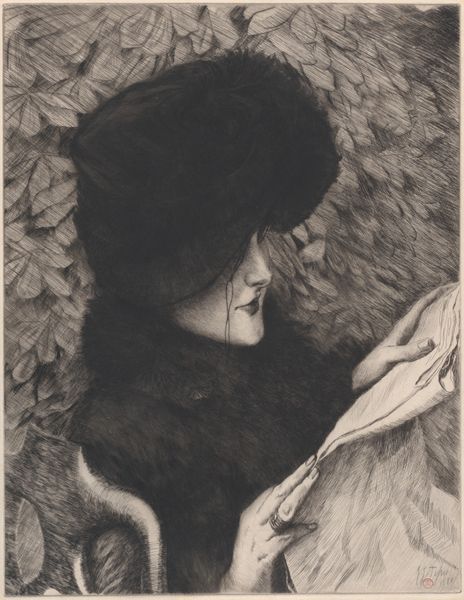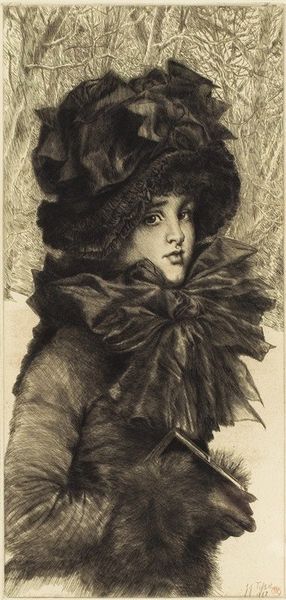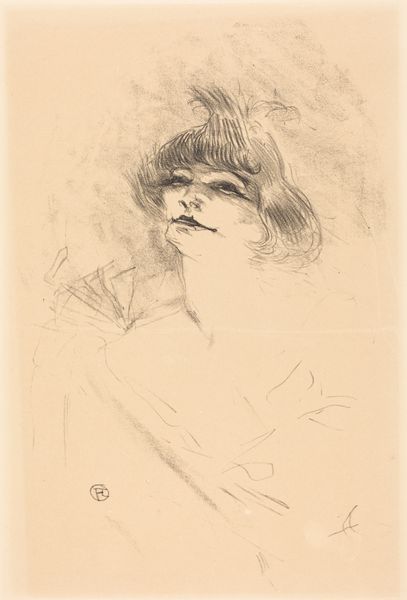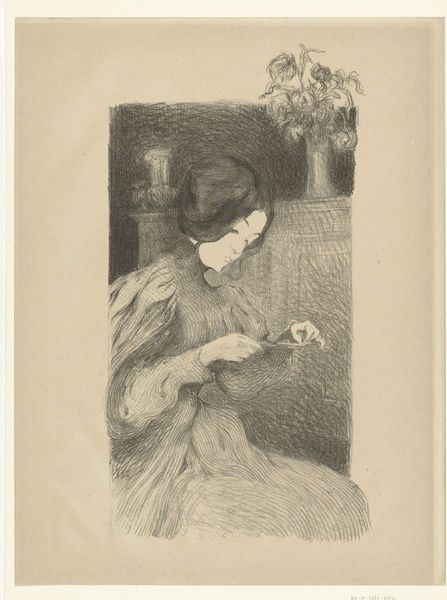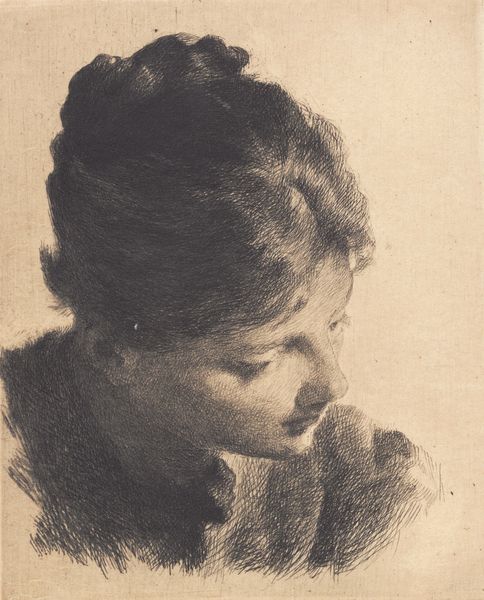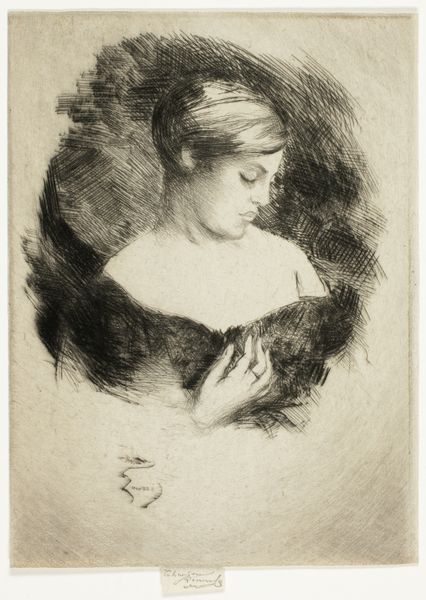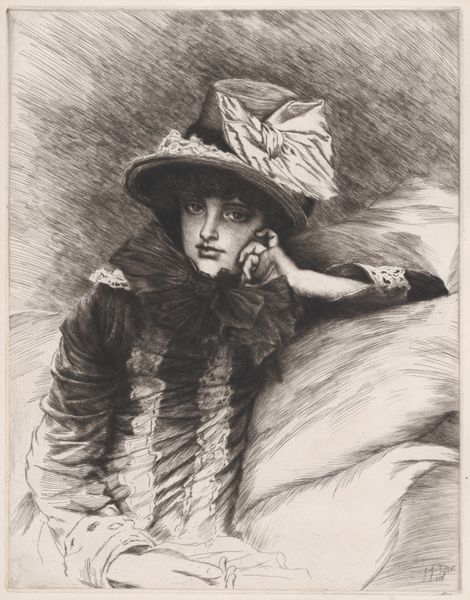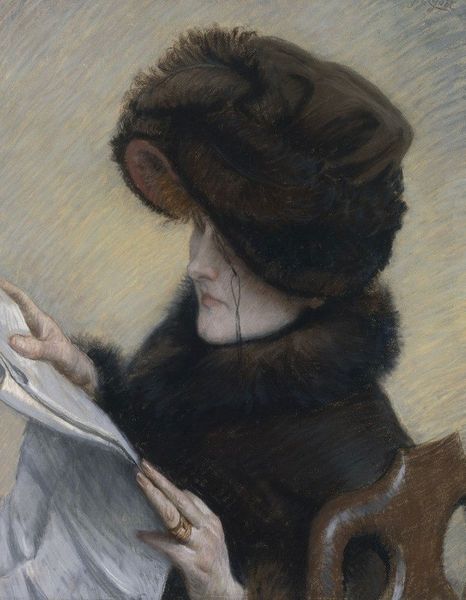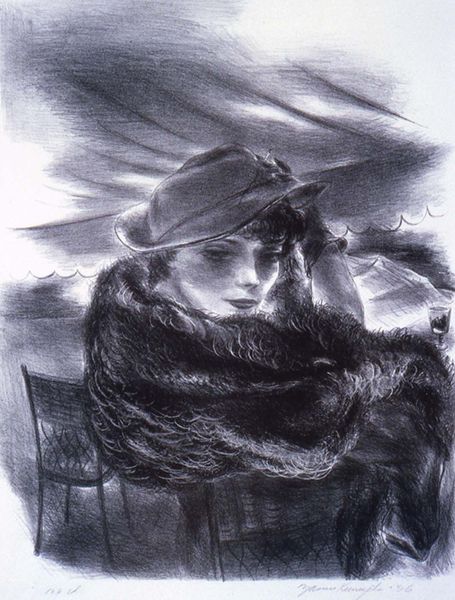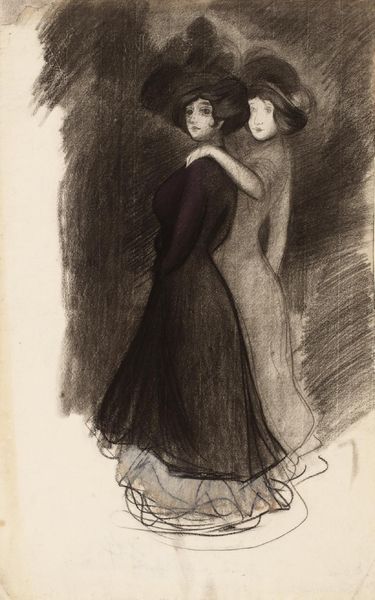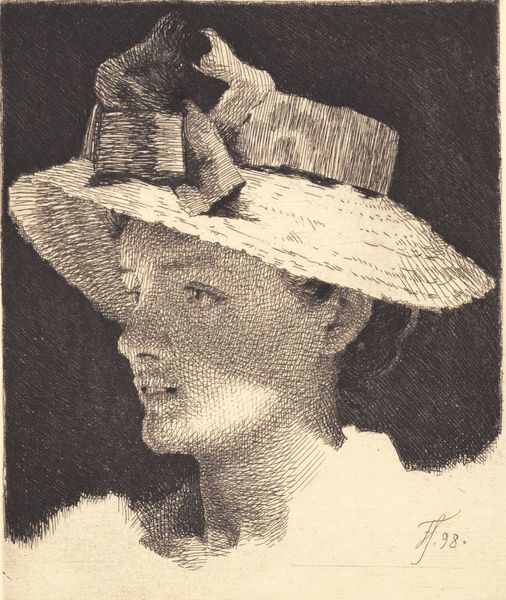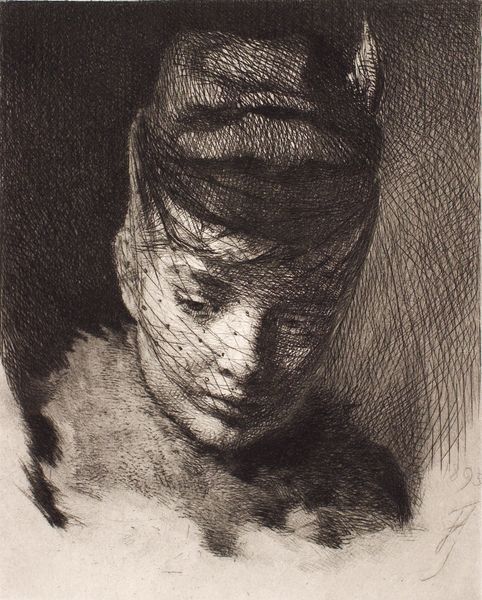
drawing, pencil
#
portrait
#
drawing
#
self-portrait
#
portrait image
#
impressionism
#
male portrait
#
intimism
#
pencil
#
portrait drawing
#
monochrome
Dimensions: 19.94 x 40.01 cm
Copyright: Public domain
Editor: Here we have James Tissot's "Journal," created in 1883. It's a pencil drawing, a self-portrait it seems. The details in the fur are impressive. What do you see in this piece beyond a simple portrait? Curator: Tissot's "Journal," more than a self-portrait, it is a careful performance of gender, class, and artistic identity. Notice the details – the lavish fur hat, the ring. Consider this within the social context of late 19th-century Paris, a rapidly changing society where visual representation was a key battleground. What does it mean for Tissot to present himself in this opulent manner? Editor: I guess it is a deliberate presentation. He's not just showing *who* he is, but perhaps who he wants to be seen as. But what about the setting - why obscure the background? Curator: The obscured background places all the emphasis on the figure, allowing Tissot to explore and perhaps even challenge, conventional notions of masculinity and artistic genius. The softness of the pencil, juxtaposed with the rigid societal expectations of the time, is rather interesting. How might this portrayal of a "gentleman" differ from more traditional representations? Editor: It’s much more intimate. Less about power, maybe more about… introspection? The fact that he’s reading suggests intellectualism, perhaps distancing himself from purely commercial success which he achieved through society portraits. Curator: Precisely. And what about the gaze, averted from the viewer? Is this a sign of modesty, or something else entirely? Does it suggest a deeper level of self-awareness? This kind of critical self-assessment reflected broader shifts in social and philosophical thought that were underway at that time. Editor: That’s fascinating. I had thought of it as simply a portrait, but there’s so much more complexity here. I appreciate the nuanced reading of this piece and its role within the art history canon. Curator: Absolutely. By understanding the social and historical underpinnings of the art of the period, we gain the insights to examine its rich narrative layers.
Comments
No comments
Be the first to comment and join the conversation on the ultimate creative platform.
